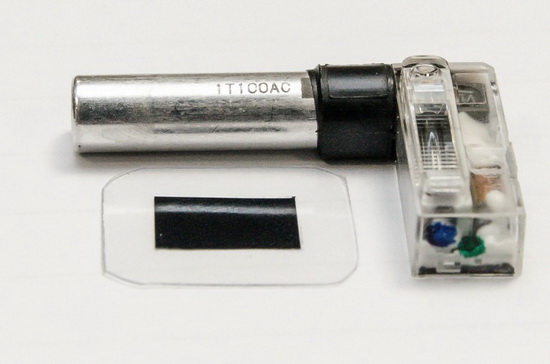Featured Products
Xenon Technologies has announced a new and smaller xenon flash, that would fit in the thinnest of smartphones and tablets.
Xenon flashes are used in mobile devices. However, only a few of them make use of such modules because they are very thick. Sony and Nokia used them, while HTC also added a unit into the now defunct Windows Phone 7-powered Mozart.
One of the major drawbacks of xenon modules is that they cannot stay lit for too long, therefore users cannot record videos with xenon flash on. Nokia’s PureView technology found in the 808 Symbian phone features a xenon flash, with built-in LED module, to ensure that the handset can light up both videos and images properly.

Xenon Technologies’ new xenon flash module compared to a conventional unit. It is a lot thinner and it delivers the same performance.
New xenon flash module for smartphones is based on new polymer capacitor
Xenon Technologies, the largest xenon flash manufacturer in the world, has announced that it developed a small capacitor that is as powerful as bigger flashes. Moreover, it is also faster than conventional flashes found in smartphones.
The new module was developed in collaboration with scientists from the Nanyang Technological University, Singapore. The first smartphone with such xenon flash may become available in late 2014, as the two partners are hoping to have a prototype ready for heavy testing in late 2013.
Currently, capacitors measure about 5mm in thickness. However, the new small capacitor from Xenon Technologies is only 1mm thick. The difference in thickness is also given by the fact that the new module is based on polymer capacitor, while the conventional modules are based on electrolytic capacitors.
It’s not all roses
One of the biggest hurdles faced by Xenon Technologies and Nanyang Technological University is that they do not have a factory where they could mass-produce the polymer capacitors.
CEO Jack Tuen said that his company would have to build a new facility or to entirely modify a current factory, in order to manufacture the modules in mass.
The company’s CEO confirmed that the new capacitor has no drawbacks when compared to current modules. Moreover, it is even better at lighting up photos.
Shooting videos will pose another challenge, as the company needs to integrate an LED flash module into the one based on xenon, in order to ensure that smartphone users will be able to take properly lit videos. The advantage is that Xenon Technologies already supplied such technology for the Nokia 808 PureView phone.






































